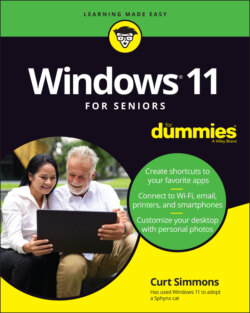Читать книгу Windows 11 For Seniors For Dummies - Curt Simmons - Страница 15
View the Touch Keyboard
ОглавлениеWindows 11 can display a touch keyboard onscreen. This feature is vital for devices that have a touchscreen and no physical keyboard. With a touchscreen, the touch keyboard appears automatically when the cursor (a blinking vertical bar) indicates that you can enter text in a box. If the touch keyboard doesn't appear automatically, you may also see a separate box floating above or below the text box. Tap that floating box to display the keyboard. Or, if you don’t see a floating keyboard, tap the keyboard icon on the taskbar to the right (it’s close to the date and time). To type using the keyboard, simply tap or click a letter, number, or symbol key.
Here are the different types of touch keyboards:
The standard layout (also called QWERTY) appears automatically (see Figure 1-1). The Enter key changes depending on the context.
The uppercase layout, shown in Figure 1-2, appears when you tap the Shift key on the standard layout.
The numbers and symbols layout appears when you tap the &123 key on the standard layout. Tap the &123 key again to return to the standard layout.
The control keys overlay appears on five keys on the standard layout when you tap the Ctrl key. The Ctrl keys are used in common tasks, such as copying (Ctrl+C) or moving (Ctrl+X) selected text. The overlay disappears automatically after you tap one of the control keys (A, Z, X, C, or V).
Select the Settings button (refer to Figure 1-1). The Setting button appears on the top left of the touch keyboard (it looks like a gear). Here, you can select the Keyboard Layout. Default is selected automatically, but you can choose Small, Split, or Traditional. You can also choose to switch to a Handwriting option, which lets you write with your finger. Windows converts your scribbles to block text. Finally, you can also select Theme and Resize. This opens the Personalization window, where you can select different keyboard and size options, shown in Figure 1-3.
Finally, you can add emoticons as you type. Select the emojis button (refer to Figure 1-1) and touch or search for the emoticon you want to use.
FIGURE 1-1
FIGURE 1-2
FIGURE 1-3
